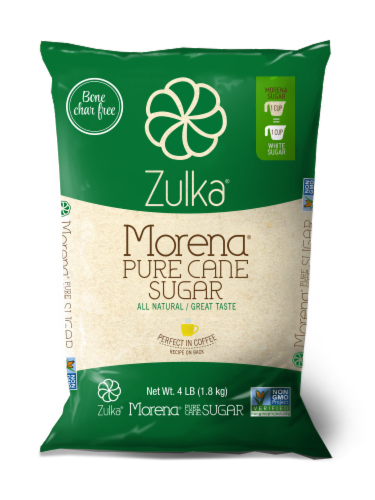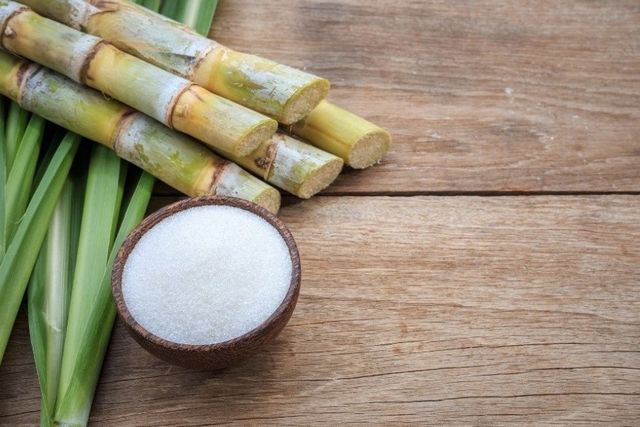Recognizing the Crucial Methods and Technologies Utilized in Modern Walking Cane Sugar Processing
The advancement of walking stick sugar handling has been significantly formed by the assimilation of advanced methods and innovations that address both efficiency and sustainability. Enzyme-assisted extraction and innovative refining approaches have actually revolutionized return optimization, while automation facilitates functional dependability. Furthermore, the focus on lasting techniques mirrors an expanding awareness of ecological impact. As we discover these essential developments, it becomes vital to analyze exactly how they not only improve manufacturing yet also line up with broader sector fads and customer needs, increasing questions regarding the future of sugar processing and its ramifications for international markets.
Historic Context of Cane Sugar Processing
The historical context of cane sugar processing discloses an abundant tapestry of agricultural advancement and cultural exchange that has actually formed its growth over centuries. The process of extracting and improving sugar got energy in India, where approaches for crystallization were perfected around the 6th century.

Advanced Removal Techniques
Efficiency in walking cane sugar removal has seen significant improvements, driven by the demand for greater returns and lower manufacturing expenses. This technique not only raises sugar return but likewise decreases the energy required for handling.
Furthermore, the adoption of membrane layer filtration innovations, such as nanofiltration and turn around osmosis, has actually reinvented the separation of sugar from pollutants. These methods permit the discerning permeation of sugar molecules while maintaining larger impurities, enhancing the extraction procedure and lessening waste.
Additionally, the integration of constant extraction systems has brought about enhanced operational efficiency. Cane Sugar Processing. These systems maintain a constant circulation of cane product, ensuring optimum extraction problems and decreasing downtime associated with batch processing
Ingenious Refining Technologies
Refining methods in cane sugar processing have gone through a transformative change, driven by the need for greater purity and enhanced item high quality. Among one of the most noteworthy technologies is the fostering of membrane filtration technologies, such as ultrafiltration and nanofiltration. These procedures properly remove contaminations and colorants without the requirement check my reference for comprehensive chemical treatments, thus preserving the sugar's natural flavor and enhancing its allure.
One more substantial innovation is using ion exchange materials, which permit discerning removal of undesirable ions from sugar options. This modern technology not just enhances the overall purity of the end product but likewise adds to decreased waste and environmental impact.
In addition, advancements in adsorption methods, making use of turned their explanation on carbon and various other sophisticated products, have shown reliable in decolorizing sugar solutions while maintaining optimal quality. The integration of these cutting-edge refining technologies makes certain that manufacturers can generate refined sugar with remarkable clarity and taste, satisfying the advancing choices of consumers.
Automation and Control Equipment
Recent advancements in refining technologies have paved the method for considerable enhancements in automation and control systems within cane sugar processing centers. These systems utilize innovative software application and equipment to improve operational performance, decrease human mistake, and make sure regular item top quality.
Modern automation integrates various parts, including sensors, actuators, and programmable reasoning controllers (PLCs), making it possible for real-time surveillance and control of essential processes. As an example, temperature level, circulation, and stress rates can be precisely managed throughout removal, clarification, and condensation stages, enhancing efficiency and lessening waste.
Moreover, advanced information analytics and equipment discovering algorithms play a pivotal role in predictive upkeep, allowing operators to expect equipment failings before they occur. This proactive approach not only minimizes downtime yet additionally expands the life expectancy of machinery.
Furthermore, automation assists in the application of Market 4.0 principles, encouraging sugar mills to attain better connectivity and information exchange across processes. Consequently, decision-making ends up being even more informed and active, ultimately improving the overall competition of walking stick sugar production. With these developments, the industry is well-positioned to fulfill growing worldwide needs while preserving functional excellence.
Sustainability Practices in Sugar Production
Sustainability practices in sugar production have become significantly important as the sector looks for to stabilize financial stability with ecological duty. As consumer awareness expands regarding the ecological effects of agricultural methods, sugar manufacturers are embracing cutting-edge approaches to decrease their eco-friendly impact.
One substantial approach is the execution of accuracy farming methods, which use data analytics to optimize resource usage, such as water and plant foods. This minimizes waste and lessens the influence on local environments. Moreover, numerous producers are transitioning to renewable energy resources, such as biomass from sugarcane by-products, to power their operations, thus reducing dependence on index fossil fuels.
Water management techniques are likewise critical; rain harvesting and efficient irrigation systems help reduce water shortage issues. Cane Sugar Processing. Additionally, incorporated pest management techniques decrease chemical use, promoting biodiversity and dirt health and wellness
Corporate social obligation campaigns are arising, with companies buying neighborhood communities and ensuring reasonable labor methods. By embracing these sustainability practices, the sugar market not just improves its credibility but likewise adds to an extra sustainable farming landscape, paving the means for future generations.

Verdict
In recap, contemporary walking cane sugar handling integrates an array of sophisticated methods and modern technologies that substantially enhance effectiveness, return, and sustainability. Collectively, these developments position the cane sugar sector to meet contemporary demands while addressing crucial global difficulties.
The evolution of cane sugar handling has been substantially shaped by the combination of advanced strategies and modern technologies that address both effectiveness and sustainability.The historic context of walking stick sugar processing discloses an abundant tapestry of agricultural advancement and social exchange that has actually shaped its development over centuries. Advancements in milling and refining emerged, laying the groundwork for modern cane sugar handling.Refining techniques in cane sugar processing have actually gone through a transformative change, driven by the demand for higher purity and improved product high quality.In recap, modern-day cane sugar handling incorporates an array of advanced techniques and technologies that significantly boost sustainability, performance, and yield.